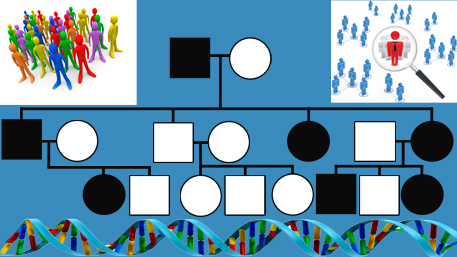Category: precision medicine
Preventive medicine can be more precise and precision medicine can be more preventive!

In a recent JAMA viewpoint, Psaty and coauthors compare precision medicine and preventive medicine as two distinct models in medicine and public health. They use the example of hemophilia B to illustrate how new gene therapy can successfully target treatment with high specific-activity factor IX variant. They contrast this model of precision medicine with the Read More >
Posted on by 1 CommentCan Genetic Risk Scores Score a Win for Precision Prevention? Time and Rigorous Studies Will Tell

In May 2018, CDC’s Office of Public Health Genomics, the National Cancer Institute’s Division of Cancer Control and Population Sciences, and the National Heart, Lung, and Blood Institute’s Center for Translation Research and Implementation Science held a special webinar titled: “Using Genetic Risk Scores in the Prevention and Control of Common Diseases: Opportunities and Challenges.” Read More >
Posted on byEvaluating the Impact of Precision Medicine: How Ivacaftor Reduces Hospitalizations of Patients with Cystic Fibrosis

Precision medicine takes into account individual factors in treating disease, targeting interventions to patients that can benefit the most. Population-based studies evaluating precision medicine approaches are important to determine whether the field can fulfill its promise for improved health outcomes. A prime example of precision medicine is ivacaftor, a small molecule drug originally developed to Read More >
Posted on byPrecision Medicine in Action: How well does cascade screening for hereditary conditions work in the real world?

An important component of precision medicine is the identification, through genetic testing, of people who are at elevated risk of disease because of pathogenic germline mutations. Cascade screening involves contacting relatives of patients with certain hereditary conditions to help inform, manage, and identify those who may be at increased risk. A systematic scoping review on Read More >
Posted on byGenomics and Precision Medicine: How Can Emerging Technologies Address Population Health Disparities? Join the Conversation.

Advances in genome sequencing, other “omic” technologies, and big data promise a new era of personalized medicine. However, there is an ongoing discussion how these new technologies can be used to understand and address existing population health disparities. On October 11, 2017, the Precision Medicine and Population Health Interest Group in the Division of Cancer Read More >
Posted on by 1 CommentIntegrating genomics into population-based cancer surveillance in the era of precision medicine

Population-based cancer surveillance provides a quantitative measurement of cancer occurrence in the United States and globally. Core activities of surveillance include measuring cancer incidence and characterizing each cancer with regard to histopathology, stage, and treatment in the context of survival. Cancer surveillance has been crucial in informing policy and practice, as well as clinical and Read More >
Posted on byGenome Sequencing for Healthy Individuals? Think Big and Act Small!

In a 2013 blog post, we asked the question: “When should we all have our genomes sequenced?” At that time, we concluded that the time is not right and that “if we want to use whole genome sequencing in the course of regular preventive care and health promotion, research should be conducted to evaluate its Read More >
Posted on byPrecision Public Health: More Precision Ahead for Individual and Population Interventions

In August 2016, we published a point-counterpoint viewpoint asking a crucial question that has been on the minds of researchers, health care providers and the public health community: “will precision medicine improve population health?” We understood that we were tackling “the elephant in the room” and hoped for reactions to this viewpoint. We were pleased Read More >
Posted on by 2 CommentsPrecision Medicine and Population Health: Dealing With the Elephant in the Room

In this week’s Journal of American Medical Association, we published a point-counterpoint commentary on the impact of precision medicine on population health. Announcement of the news of the US precision medicine initiative has been met with a range of responses from enthusiasm to skepticism about potential benefits, limitations and return on investment. In considering the Read More >
Posted on by 2 CommentsThe Shift From Personalized Medicine to Precision Medicine and Precision Public Health: Words Matter!

Advances in genomics and other ‘omic’ technologies have ushered in a new era variably called “personalized” or “precision” medicine, which takes into account individual genetic and other sources of variability in disease treatment and prevention. In the past decade, we have seen a significant growth in interest and usage of the terms personalized and precision Read More >
Posted on by 1 Comment

